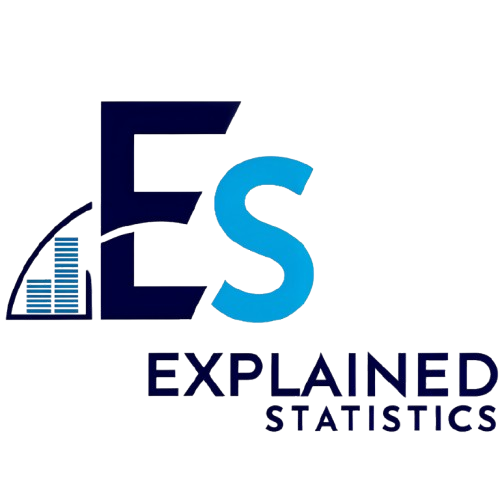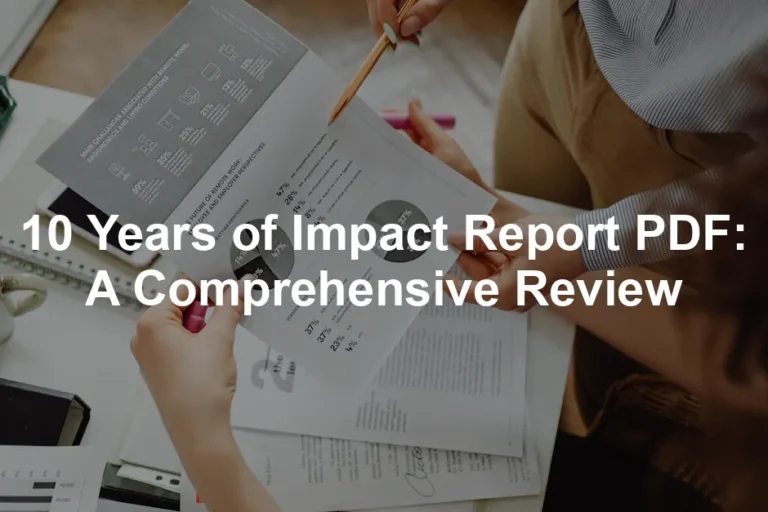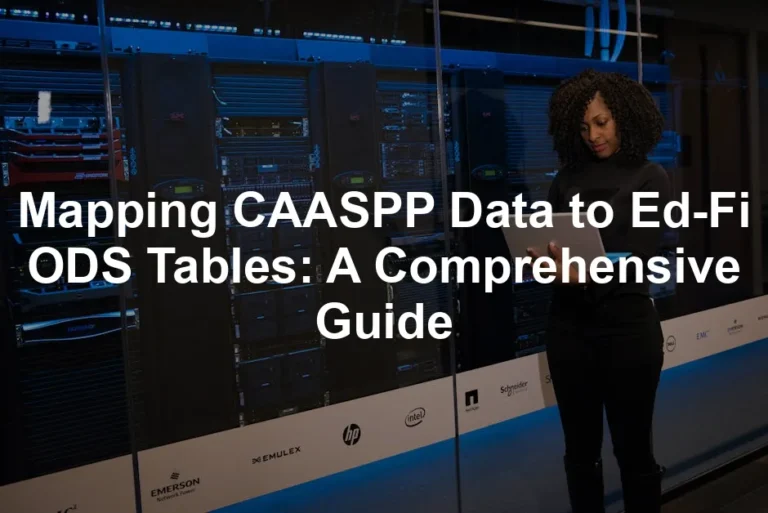Introduction
Statistics might sound scary, but it’s your best friend in the world of data. For students with a limited math background, it can be as welcoming as a warm cup of cocoa on a chilly day. Elementary Statistics: A Step by Step Approach by Allan G. Bluman is here to help you navigate through the statistical waters. This book is an invaluable resource, breaking down complex concepts into bite-sized pieces.
So, what’s in store for you? Expect to learn crucial statistical concepts, practical applications, and the joy of a step-by-step method. Bluman’s approach allows you to build a solid foundation, making statistics less daunting and a lot more enjoyable!
Why should you care about statistics? Well, it’s not just about numbers; it’s about making informed decisions in various fields. Whether you’re analyzing business trends, evaluating healthcare data, or studying social sciences, statistics is everywhere. It helps you interpret data and make sense of the world around you. So grab your calculator, and let’s dive into the significance of statistics!

Understanding the Basics of Statistics
What is Statistics?
Statistics is the science of collecting, analyzing, and interpreting data. It’s like being a detective, but instead of solving crimes, you’re solving problems using numerical evidence. Statistics helps us understand patterns, make predictions, and draw conclusions based on data. There are two main types of statistics: descriptive and inferential.
Descriptive statistics summarize and describe features of a dataset. Imagine you have a bag of candies. Descriptive statistics would tell you how many candies you have, the average weight of each candy, and how many are red versus blue. It’s all about giving you a snapshot of what’s happening.
On the other hand, inferential statistics allow you to make predictions or inferences about a larger population based on a sample. Picture this: You taste a spoonful of soup and decide how the entire pot tastes. That’s inferential statistics at work!

Key Terms and Concepts
Descriptive Statistics: These are measures that summarize the main features of a dataset. Key components include:
- Measures of Central Tendency: This includes the mean (average), median (middle value), and mode (most frequent value). These measures help you understand where most of your data points lie.
- Measures of Variability: Variability tells you how spread out your data is. Key measures here are range (difference between highest and lowest), variance (average of the squared differences from the mean), and standard deviation (average distance from the mean).
Inferential Statistics: This area focuses on making predictions about a population based on a sample. Important concepts include:
- Hypothesis Testing: This is a method for testing a claim or hypothesis about a parameter in a population, using data measured in a sample. You might want to consider using Statistics for Dummies to get a more engaging insight into these concepts.
- Confidence Intervals: These provide a range of values, derived from the sample data, that is likely to contain the population parameter. They let you know how confident you can be in the estimate.
- Statistical Significance: This indicates whether the results observed in your sample data are likely due to chance or if they reflect a true effect in the population.
By familiarizing yourself with these concepts, you’re setting yourself up for success in understanding and applying statistics in real-world scenarios. So keep that curiosity burning, and let’s keep going!

The Structure of the Book
Overview of the Content
Elementary Statistics: A Step by Step Approach by Allan G. Bluman is structured to make statistics accessible and engaging. The book unfolds over several chapters, each designed with a specific focus to build your statistical knowledge intuitively.
- The Nature of Probability and Statistics: This chapter introduces the foundational concepts of statistics. It sets the stage for understanding how data is collected and analyzed.
- Frequency Distributions and Graphs: Here, readers learn to organize data effectively. Various types of graphs are introduced to visualize information clearly.
- Data Description: This chapter dives into measures of central tendency and variability. It’s all about summarizing data and understanding what it represents.
- Probability and Counting Rules: The focus shifts to probability concepts and essential counting techniques. This is crucial for making predictions based on data.
- Discrete Probability Distributions: Students explore key distributions, emphasizing the binomial distribution. Examples help solidify understanding.
- The Normal Distribution: Understanding the normal distribution is vital in statistics. This chapter discusses its significance and applications.
- Confidence Intervals and Sample Size: Readers learn how to construct confidence intervals and determine appropriate sample sizes for studies.
- Hypothesis Testing: This section covers the essential steps in hypothesis testing. It includes practical applications and examples.
- Comparing Means and Variances: Here, readers test differences between two means and proportions, gaining practical insights into statistical comparisons.
- Correlation and Regression: This chapter explores the relationships between variables. It introduces regression analysis, a powerful statistical tool.
- Advanced Topics: The final chapters cover more complex subjects like ANOVA and nonparametric statistics, enriching the reader’s understanding.
The book emphasizes practical applications. Each chapter is packed with real-world examples, ensuring that students can connect statistical theory to everyday life. Bluman’s approach demystifies statistics, making it approachable for everyone.

Key Features of the Book
Bluman adopts a non-theoretical approach throughout the text. He prioritizes understanding over rote memorization. This design choice makes the learning process engaging and less intimidating. Statistics can often feel like a labyrinth of numbers. Bluman opens the door, guiding readers through with clarity and humor.
The book is also enhanced by supplementary tools. One standout feature is the integration with the ALEKS platform. ALEKS offers personalized learning experiences, allowing students to tackle questions at their own pace. It includes features like custom question authoring and video assignments. This interactive element is perfect for reinforcing concepts learned in the textbook.
In addition to these tools, the book provides detailed instructions on using statistical software like Excel and TI calculators. Speaking of calculators, if you’re serious about statistics, consider investing in a TI-84 Plus CE Graphing Calculator. It’s a game-changer for handling complex calculations!

Chapter 5: Discrete Probability Distributions
When we talk about discrete probability distributions, think of them as the quirky relatives at a family reunion. They might not be as popular as their continuous counterparts, but they sure bring a lot of character! One key player in this family is the binomial distribution.
The binomial distribution helps you understand scenarios with two possible outcomes, like flipping a coin. Imagine you flip a coin ten times. You might want to know the probability of getting exactly six heads. The formula for the binomial distribution is:
P(X = k) = \binom{n}{k} p^k (1-p)^{n-k}
Here, n is the number of trials, k is the number of successful outcomes, and p is the probability of success.
For example, if you want to know the odds of rolling a 4 on a die three times in five rolls, you can plug in your numbers. With some calculation, you’ll find out just how lucky (or unlucky) you are!
Chapter 6: The Normal Distribution
Ah, the normal distribution! This bell-shaped wonder is the rock star of statistics. Why? It appears in many natural phenomena, from heights to test scores. About 68% of data points fall within one standard deviation of the mean.
Why does it matter? Because many statistical tests assume normality. For example, in quality control, if you’re measuring the weight of cereal boxes, you expect most to weigh around the average, with fewer being much heavier or lighter. Understanding the normal distribution helps you identify outliers and make informed decisions.
Applications abound! In finance, it helps assess risks. In healthcare, it aids in analyzing patient data. So next time you see that familiar bell curve, remember it’s not just pretty; it’s incredibly useful!
Chapter 7: Confidence Intervals and Sample Size
Confidence intervals are like the safety nets of statistics. They give you a range where you believe a population parameter lies. Imagine you survey people about their favorite ice cream flavor. You find that 60% prefer chocolate, but you’re not 100% sure. A confidence interval might tell you that you’re 95% sure that the true percentage is between 55% and 65%.
To construct a confidence interval, you’ll need your sample mean, standard deviation, and the z-score or t-score that corresponds to your desired confidence level.
Determining sample size is equally crucial. Too small, and you risk error. Too large, and you waste resources. The formula for calculating sample size for proportions is:
n = \left(\frac{Z^2 \cdot p \cdot (1-p)}{E^2}\right)
Where n is the required sample size, Z is the z-score, p is the estimated proportion, and E is the margin of error. Make sure to use this wisely for reliable results!

Chapter 8: Hypothesis Testing
Hypothesis testing is like a courtroom drama. You have your null hypothesis (the status quo) and your alternative hypothesis (the challenger). The goal? Determine if there’s enough evidence to reject the null.
The process starts with stating both hypotheses. Next, choose your significance level (commonly 0.05). Collect your data, perform the appropriate test (like a t-test or chi-square test), and calculate your test statistic.
Finally, compare your statistic to the critical values. If it falls in the rejection region, you can say, “Guilty!” and reject the null hypothesis. If not, you must acquit it. It’s all about making sound decisions based on your data!

Chapter 9: Comparing Means and Variances
Comparing means and variances is essential in statistics. Want to know if two groups differ in height? Or if the test scores of two classes vary? You can use various tests for this purpose.
For comparing two means, the independent t-test is your friend. It checks if the means of two groups are significantly different. For example, if Class A scored an average of 75 and Class B scored 80, the t-test helps you determine if that difference is significant or just due to chance.
When it comes to proportions, the z-test does the trick. And if variances are the focus, Levene’s test can help. These tests empower you to draw meaningful conclusions from your data!

Chapter 10: Correlation and Regression
Correlation and regression analysis are the perfect duo for exploring relationships between variables. Correlation tells you how closely two variables move together. A correlation coefficient (r) ranges from -1 to 1. A value close to 1 indicates a strong positive correlation, while -1 indicates a strong negative one. Zero? No relationship at all!
Regression takes it a step further. It helps predict one variable based on another. For example, if you want to predict someone’s weight based on their height, regression analysis will fit a line through your data points. This line can help you make predictions about future data points.
Together, these tools unlock insights into how variables interact, making them essential in fields like economics, biology, and social sciences!
Chapter 11-14: Advanced Topics
In the realm of advanced statistics, several topics await your curiosity. ANOVA (Analysis of Variance) allows you to compare means across multiple groups. It’s like a family reunion—who’s the tallest cousin?
Nonparametric statistics come into play when you can’t assume normality. They offer flexibility in analyzing data that doesn’t fit traditional assumptions. If you’re keen on diving into this, you might want to grab Statistical Methods for the Social Sciences by Alan Agresti for a deeper understanding.
Sampling techniques are vital for ensuring your data represents the population. Approaches like stratified sampling help ensure diversity in your sample.
Finally, simulation techniques, including the Monte Carlo method, provide valuable insights through repeated random sampling. These advanced topics expand your statistical toolkit, preparing you for complex data analyses ahead!

Practical Applications of Statistics
Real-World Applications
Statistics isn’t just a bunch of numbers; it’s a superhero in various fields! Let’s explore how it’s saving the day in healthcare, business analytics, and social sciences.
In healthcare, statistics play a crucial role. For example, doctors use statistical analyses to evaluate the effectiveness of new treatments. They conduct clinical trials, collecting data on patient outcomes. This helps determine if a new drug is actually better than existing options. It’s like taking a pulse on the entire population’s health!
Business analytics is another domain where statistics shine. Companies analyze customer data to make informed decisions. For instance, a retail store might analyze sales data to identify trends. They might find that sales spike during holidays. Armed with this knowledge, they can adjust their inventory and marketing strategies accordingly. Suddenly, the store isn’t just guessing; it’s making savvy, data-driven choices!
In social sciences, researchers use statistics to understand societal trends. For example, surveys can help gauge public opinion on various issues. Researchers can analyze the data to identify correlations between education levels and voting behavior. This insight can guide policies and initiatives. Statistics turn insights into action!
So, whether in healthcare, business, or social sciences, statistical analysis is essential for effective decision-making. It empowers professionals to transform raw data into actionable strategies.

Importance of Statistical Literacy
In today’s data-driven world, statistical literacy is more crucial than ever. What is statistical literacy, you ask? It’s the ability to understand and interpret data. And guess what? This skill can open doors in your career!
Employers are on the lookout for candidates who can analyze and interpret data. Whether you’re a marketer trying to craft targeted campaigns or a healthcare professional assessing patient data, being statistically savvy sets you apart. Imagine being in a meeting, and everyone is talking about “big data.” You confidently join the conversation, offering insights based on statistical analyses. Instant credibility!
Statistical literacy also enables you to critically evaluate information. In an age where misinformation runs rampant, knowing how to assess data sources is invaluable. You can discern between sound studies and flimsy claims. This ability not only enhances your professional skill set but also helps you become an informed citizen.
In summary, statistical literacy is not just a nice-to-have; it’s a must-have! It enhances your career prospects and equips you with the tools to navigate the world of data, making you a valuable asset in any field.

Tips for Studying Statistics
Effective Study Techniques
Mastering statistics can feel like climbing a mountain. But fear not! Here are some tips to make your ascent smoother and more enjoyable.
First up, practice problems. They are your best friends! The more you practice, the more comfortable you become with concepts. Don’t just read through examples; work through them! Create your own problems to solve. This active engagement will reinforce your understanding.
Next, consider group study sessions. Collaborating with peers can provide fresh perspectives. Discussing concepts and solving problems together enhances your learning experience. Plus, it’s a great way to make studying less solitary. Who says studying can’t be fun?
Don’t forget about online resources! Websites like Khan Academy or Coursera offer fantastic videos and exercises. These platforms can help clarify complex topics. Sometimes, a different explanation makes all the difference!
Lastly, embrace statistical software. Tools like Excel or TI calculators are invaluable. They simplify calculations and help visualize data. Learning how to use these tools will not only enhance your understanding but also prepare you for real-world applications. If you want to dive deeper into Excel, grab a copy of Excel 2019 for Dummies to master the basics!
By implementing these strategies, you’ll find yourself mastering statistics in no time, and who knows, maybe even enjoying it along the way!

Conclusion
Mastering elementary statistics is essential for academic and professional success. Allan G. Bluman’s Elementary Statistics: A Step by Step Approach serves as a guiding star in this educational journey. The book simplifies complex concepts and makes them digestible for students with limited math backgrounds.
Understanding statistics opens doors to numerous fields, from business to healthcare. By grasping these fundamental principles, you become equipped to analyze data and make informed decisions. Bluman’s book emphasizes a non-theoretical approach, ensuring that students not only learn the material but also understand how to apply it in real-world scenarios.
As you progress through the chapters, you’ll find that statistics isn’t just a collection of numbers; it’s a powerful tool to interpret trends and patterns. The engaging examples and practical applications in the book demystify statistics, making it accessible and enjoyable.
So, whether you’re crunching numbers in a business report or analyzing data in a science project, remember that each statistical concept you master brings you one step closer to becoming a data-savvy professional. Embrace the challenge and enjoy the process!
FAQs
What is the target audience for Elementary Statistics: A Step by Step Approach?
Elementary Statistics: A Step by Step Approach is designed primarily for students beginning their journey in statistics. It’s particularly beneficial for those with limited math backgrounds, making it ideal for high school and college students. Bluman’s approachable style caters to learners who may find traditional statistics courses intimidating.
How can I best utilize this textbook for my statistics course?
To maximize your learning experience with the textbook, start by reading each chapter thoroughly. Take notes and work through the examples provided. Supplement your study with practice problems at the end of each chapter. Consider forming study groups to discuss concepts and tackle challenging problems together. This collaborative approach can enhance your understanding significantly.
Are there any online resources or tools that complement this textbook?
Yes! There are several online platforms that pair well with Bluman’s textbook. ALEKS is a fantastic tool offering personalized learning experiences and interactive assignments. Websites like Khan Academy and Coursera provide additional video tutorials and exercises to reinforce your learning. You can also join online forums or study groups to engage with fellow learners.
What are the prerequisites for understanding elementary statistics?
A basic understanding of algebra is crucial for tackling elementary statistics. Familiarity with concepts like equations, functions, and basic mathematical operations will set you up for success. If you feel unsure about your math skills, consider reviewing algebraic principles before diving into statistics.
How can I improve my statistical skills after using this book?
After completing Bluman’s textbook, you can further enhance your statistical skills by exploring advanced textbooks on statistics or enrolling in online courses on platforms like edX or Coursera. Engaging in real-world projects that require statistical analysis will also solidify your understanding. Additionally, consider practicing with statistical software like R or Python to gain practical experience in data analysis.
If you’re interested in learning more about the foundational concepts of statistics, check out this introduction to statistical learning with Python.
Please let us know what you think about our content by leaving a comment down below!
Thank you for reading till here 🙂
All images from Pexels




